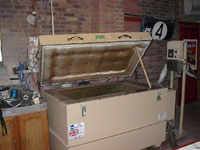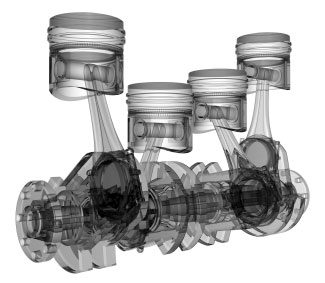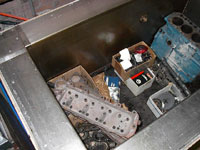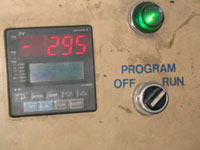Cryogenic Treatment for Extended Wear and Stress Relief of Metals The Cryogenic process increases the density of existing materials to make them more durable and stronger, which can yield dramatic results in metal performance, durability, and wear. By placing the materials in a specially constructed processor, liquid nitrogen is used to lower the temperature to -300 degrees F. It is a dry process, I.E., the Liquid Nitrogen (LN2) never actually touches the part, it is only used to cool the chamber. The Cryogenic process supplements conventional heat treatment, completing the metallurgical changes that the tempering/quenching begins. This process is ideal for providing extended wear and durability as well as increasing the stress relieving properties of metal parts and tooling. The Cryogenic process increases the density of existing materials to make them more durable and stronger, which can yield dramatic results in metal performance, durability, and wear. By placing the materials in a specially constructed processor, liquid nitrogen is used to lower the temperature to -300 degrees F. It is a dry process, I.E., the Liquid Nitrogen (LN2) never actually touches the part, it is only used to cool the chamber. The Cryogenic process supplements conventional heat treatment, completing the metallurgical changes that the tempering/quenching begins. This process is ideal for providing extended wear and durability as well as increasing the stress relieving properties of metal parts and tooling.
|
|
 Cryogenic Treatment for Extended Wear and Stress Relief of Metals offers many advantages: Cryogenic Treatment for Extended Wear and Stress Relief of Metals offers many advantages:
- Reduces friction and wear properties as well as surface roughness
- Alters and refines the molecular grain structure
- Allows the machining of parts to tighter tolerances
- Increases dimensional stability on critical components
- Relieves stress fracturing
- Provides for easier machining and redressing
- Increases component durability and lifespan
- Lowers replacement costs and downtime due to increased wear and use
|
|

Parts are loaded into a sealed ultra-insulated chamber where a computer controls the introduction of liquid nitrogen (LN2) at a rate that allows cooling the chamber to a rate of 1 degree per minute. The cooling is achieved by evaporation, not immersing parts in the LN2, it is a dry process. This slow rate prevents any dimensional distortion or temperature induced stress. Once at -300F below zero, this temperature is maintained for a period of 15 to 25 hours. During this time, the microstructure grain change occurs, changing austenitic grain (soft) to martensitic grain (harder). Some say this process “realigns” the grain structure or makes the grain structure smaller. In truth, both are happening with this microstructure grain change.
 Once this dwell at temperature has been accomplished, the processor then starts to heat the chamber, once again at 1 degree per minute, to a temperature of 300F above zero. The chamber is held at this temperature for several hours, this temper cycle is what finalizes the grain structure conversion. Once this dwell at temperature has been accomplished, the processor then starts to heat the chamber, once again at 1 degree per minute, to a temperature of 300F above zero. The chamber is held at this temperature for several hours, this temper cycle is what finalizes the grain structure conversion.
The end result is a base material that is not appreciably harder but has greater durability and wear resistance. Since this is a thru the grain structure transformation, if the material wears or requires sharpening, the treatment is not removed and remains effective throughout the life of the component.
|
|
|
|
|